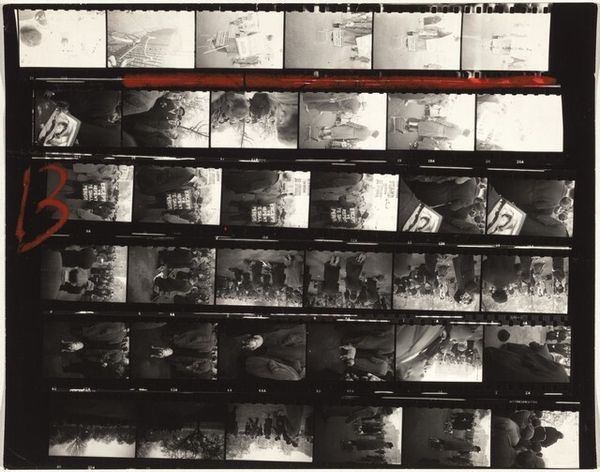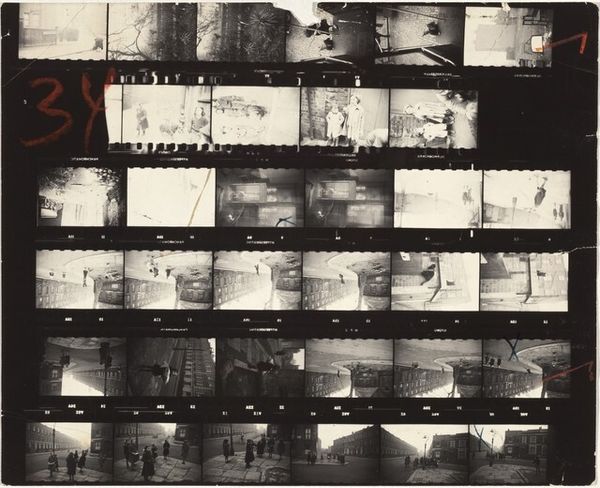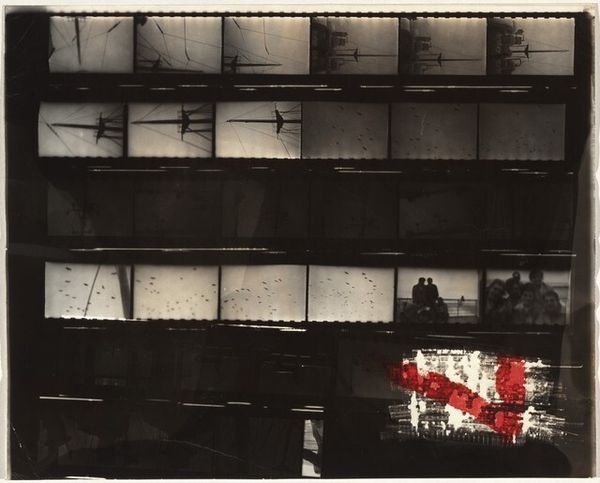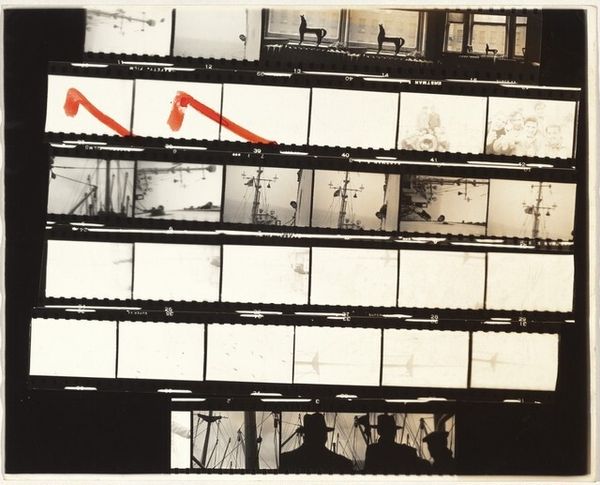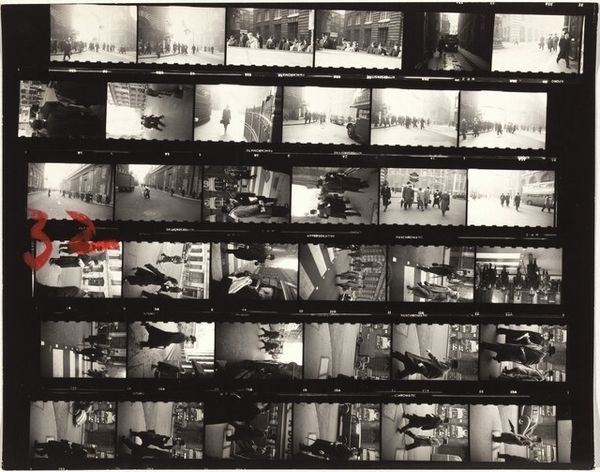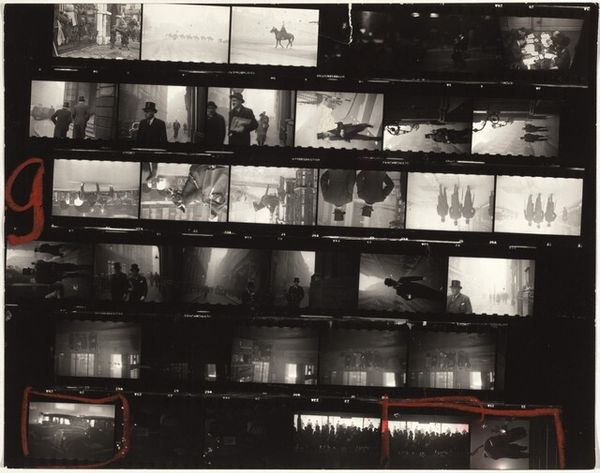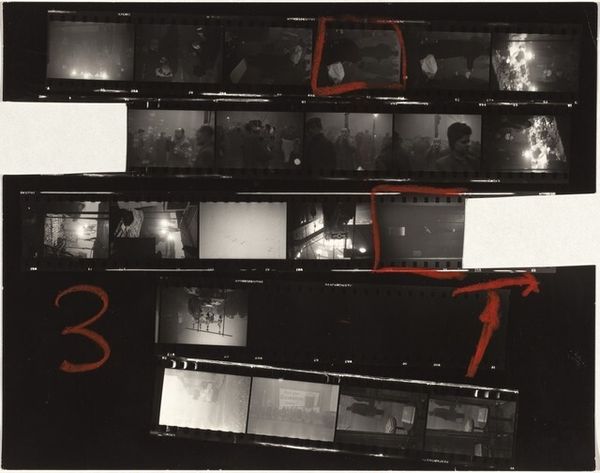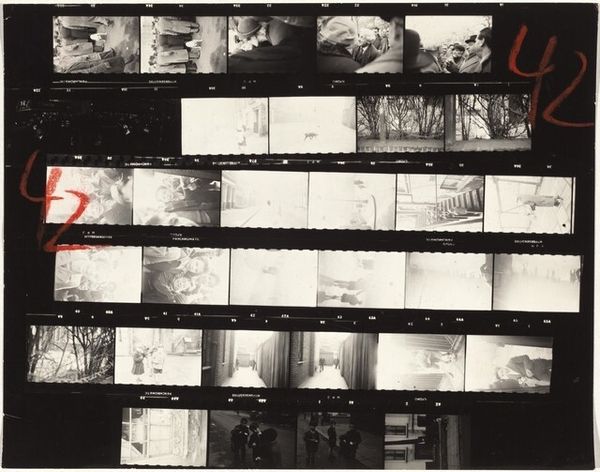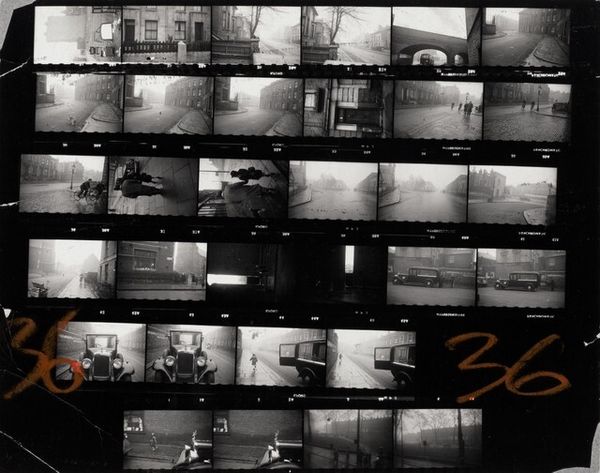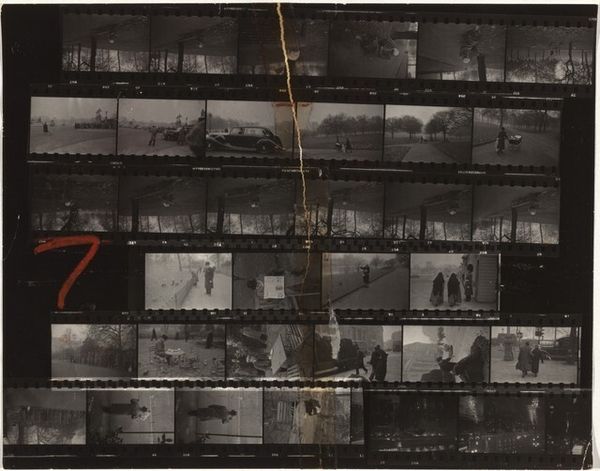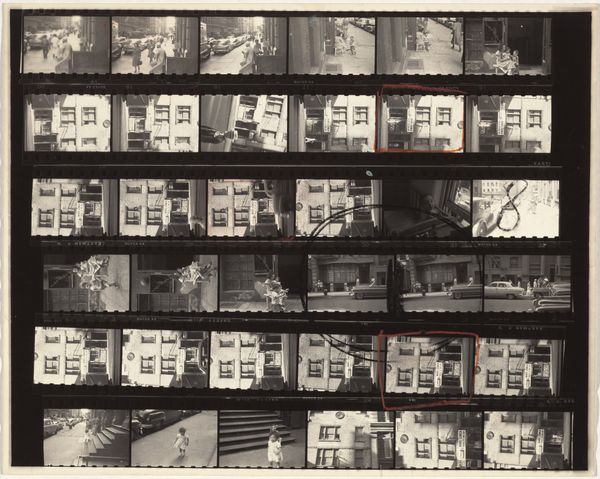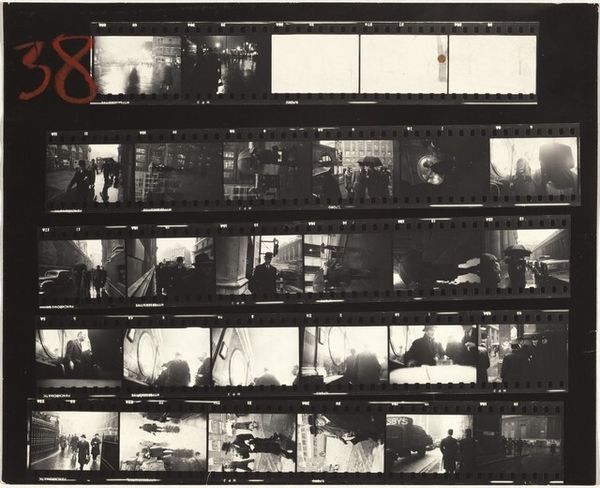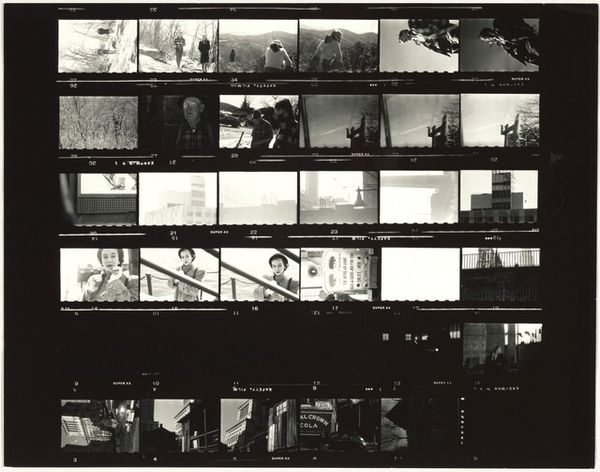
contact-print, photography
#
film photography
#
contact-print
#
street-photography
#
photography
#
film
#
modernism
#
realism
Dimensions: overall: 20.3 x 25.8 cm (8 x 10 3/16 in.)
Copyright: National Gallery of Art: CC0 1.0
Editor: This is Robert Frank’s "London 33," a contact sheet from 1952-1953. It's interesting to see the artist’s raw process like this. The collection of images really speaks to post-war urban life; how would you interpret the cultural narrative within this contact sheet? Curator: Well, viewing "London 33" through a historical lens, we can see it as a reflection of the socio-political climate of post-war London. Frank, an outsider, captured everyday life—often somber or alienated. Contact sheets such as these give insight to the choices made; the act of selection is also a form of judgement of his subjects. What elements in this particular arrangement speak most strongly to you? Editor: The stark contrast and grainy quality enhance that feeling. Some frames feel almost intrusive, as though we're glimpsing private moments on public streets. The framing adds to the storytelling, like capturing images that show isolation. It also appears this was during a period of economic constraint. Curator: Exactly. This rawness was quite deliberate. How do you think showing work like this challenges traditional norms of documentary photography, particularly during this period? What norms was it opposing? Editor: I guess it challenged the heroic or idealized depictions that were common at the time. It’s grittier, more honest, in a way that perhaps served as social commentary. But how would it have been viewed at the time it was released, do you think? Curator: Probably as subversive, even controversial. The explicit nature goes against post-war optimism and a tendency to gloss over societal issues; showing it was an act of political and social observation. Understanding it now gives it a new historical resonance; its display shapes how we think of Robert Frank. Editor: So the very act of displaying this now reinforces this understanding of his legacy. That’s fascinating – a work of art that challenges how we think about the history of its display and the impact of cultural change. Thanks. Curator: Exactly. Every decision in its presentation can shift and adjust how history is interpreted through this artifact. Thank you!
Comments
No comments
Be the first to comment and join the conversation on the ultimate creative platform.
